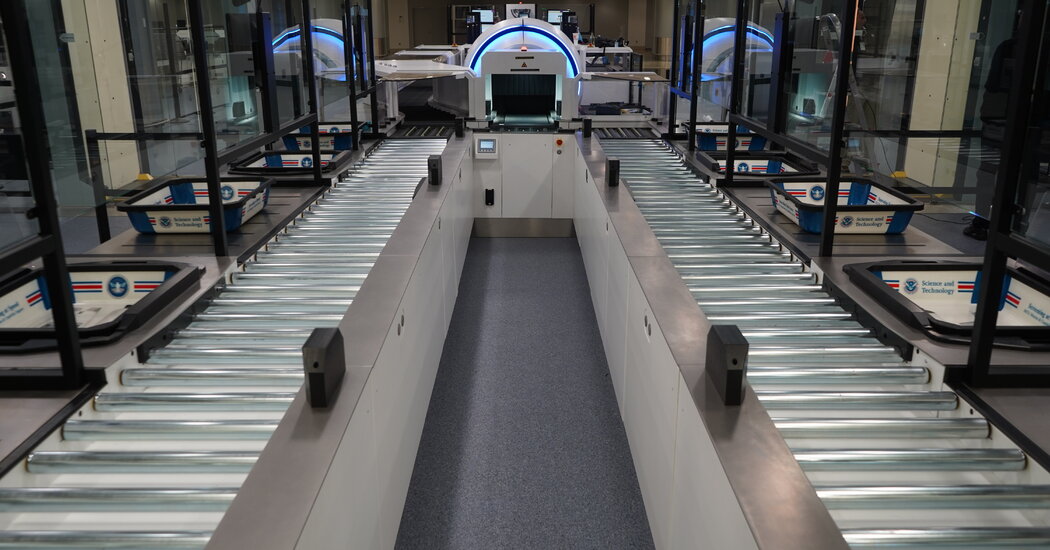As most air travelers can attest, the experience at an airport’s security checkpoint can be far from serene. There are many rules — often shouted by Transportation Security Administration officers — about what you can bring with you, how to array your belongings and where to stand. Lines can be painfully long and anxieties sky high. And throughout the process, there are security officers.
But at Harry Reid International Airport in Las Vegas, a new kind of security screening, unveiled by the T.S.A. on Wednesday, is led by the passenger themselves.
The system, which uses video monitors, facial recognition software and body scanners, is not about shaving time off the travel journey, but about improving the overall passenger experience, said Christina Peach, a deputy assistant administrator for requirements and capabilities at the T.S.A.
“Individuals want to be able to complete the screening process at their own pace and with minimal interaction with our officers,” she said.
The new pilot program officially opens to the public on March 11. Here’s what to know.
Where is it and who can use it?
The self-service screening process, which is only available for travelers with T.S.A. PreCheck clearance, will be available at two security lanes within the “Innovation Checkpoint” at Harry Reid International Airport in Las Vegas. (The airport tests emerging technologies and new processes at six “Innovation Checkpoint” lanes.)
Traditional security screening will continue to be available for passengers.
How does the screening work?
As a traveler approaches the security lanes, a screen will display instructions about how to arrange personal belongings in bins and what possessions to remove (electronics and belts, for example). With a camera feature on a small tablet, facial recognition technology will be used first to verify your identity.
Then, you’ll go to a divestment station, the area by the conveyor belt where you drop your belongings and put them in a bin. There are two stations per lane, allowing two passengers to use the lane simultaneously. Video monitors at each station will play step-by-step instructions. The aim is to get one bin per passenger, Ms. Peach said.
You’ll push your bin to the conveyor belt, which then moves the bin to be scanned. After this, you will step through a body scanner that resembles a glass box.
If a bin is flagged, it is routed down a different path and a T.S.A. officer will conduct a search.
Once you collect your bag, you…
Click Here to Read the Full Original Article at NYT > Travel…
